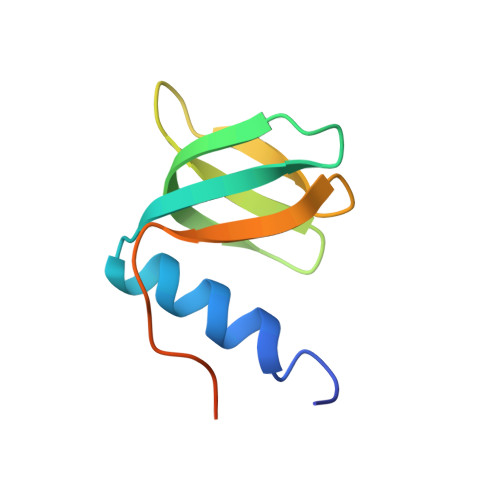Hfq binds ribonucleotides in three different RNA-binding sites.
Murina, V., Lekontseva, N., Nikulin, A.(2013) Acta Crystallogr D Biol Crystallogr 69: 1504-1513
- PubMed: 23897473
- DOI: https://doi.org/10.1107/S090744491301010X
- Primary Citation of Related Structures:
3QUI, 4J5Y, 4J6W, 4J6X, 4J6Y - PubMed Abstract:
The Hfq protein forms a doughnut-shaped homohexamer that possesses RNA-binding activity. There are two distinct RNA-binding surfaces located on the proximal and the distal sides of the hexamer. The proximal side is involved in the binding of mRNA and small noncoding RNAs (sRNAs), while the distal side has an affinity for A-rich RNA sequences. In this work, the ability of various ribonucleotides to form complexes with Hfq from Pseudomonas aeruginosa has been tested using X-ray crystallography. ATP and ADPNP have been located in the distal R-site, which is a site for poly(A) RNA binding. UTP has been found in the so-called lateral RNA-binding site at the proximal surface. CTP has been found in both the distal R-site and the proximal U-binding site. GTP did not form a complex with Hfq under the conditions tested. The results have demonstrated the power of the crystallographic method for locating ribonucleotides and predicting single-stranded RNA-binding sites on the protein surface.
- Institute of Protein Research, RAS, Institutskaya 4, Pushchino 142290, Moscow Region, Russian Federation.
Organizational Affiliation:




















